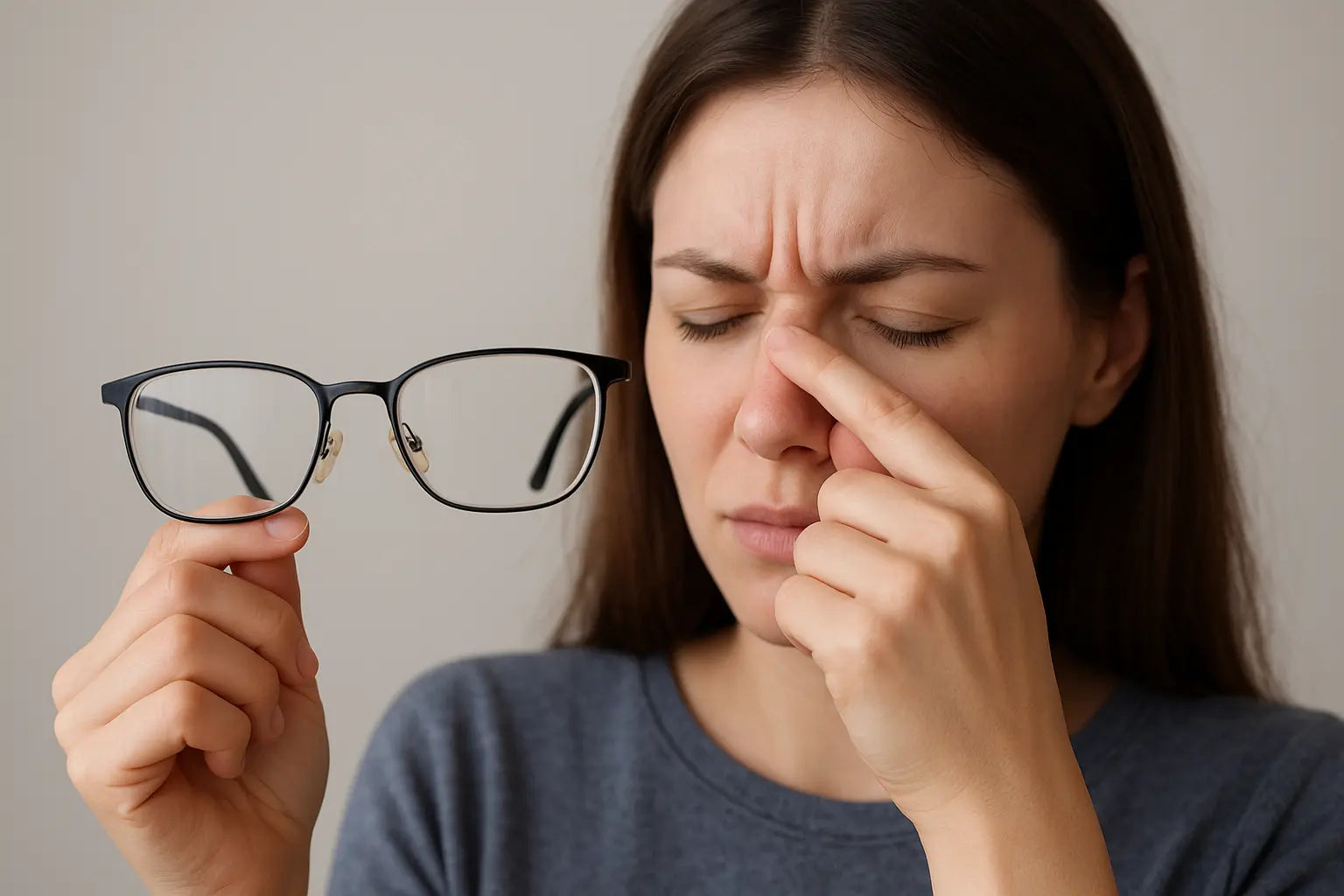
Redefining Eyewear Comfort: How OptiStrips Protect Your Skin Where It Matters Most
Redefining comfort for people who are increasingly sensitive to pressure, touch, and texture on the face
A New Look at Glasses and Skin Health
If you wear glasses every day, you’ve probably felt it that subtle ache on the sides of your nose, the faint eyeglass marks on nose skin that linger long after you’ve taken your frames off. For some, those marks fade within minutes. For others, they become a daily reminder of constant pressure, turning into skin dents from glasses, irritation, and sometimes even permanent discoloration.
While eyewear design has evolved with lighter frames and sleeker styles, one thing hasn’t changed: the way glasses sit on your skin. That’s where OptiStrips, the only esthetician-developed skincare accessory for eyeglass wearers, changes the conversation. Patent-pending, reusable, and made from medical-grade silicone, OptiStrips are more than just nose pads for glasses. They’re a second skin designed to protect your skin’s most vulnerable areas while keeping your glasses comfortable, secure, and less prone to slipping during the day.
Anatomy of the Nose Bridge: Where Glasses Rest
To understand why OptiStrips are different, it helps to know a bit about facial anatomy. Glasses typically rest in two main contact zones:
The Problem with Constant Pressure
How OptiStrips Work: A Second Skin for Your Glasses
OptiStrips are designed to be worn on your skin, not on your glasses. This distinction matters. By placing the strip directly over the vulnerable areas where glasses rest, you create a second-skin foundation a soft but resilient layer that absorbs and redistributes the frame’s weight.
This design moves more of the pressure to the thicker, stronger upper bridge while relieving the lateral, capillary-dense zones. It also helps create a more stable resting surface, reducing the tiny shifts that lead to glasses slipping during wear.

Why Aging Skin Needs Extra Protection
As we age, our skin naturally loses collagen, elastin, and fat the very components that give it bounce and resilience. In menopausal and post-menopausal women, lower estrogen levels can make skin noticeably thinner, particularly in high movement, high contact areas like the nose bridge.
This thinning means pressure marks fade more slowly and are more likely to become permanent. Broken capillaries appear more easily. Irritation that would have healed overnight in your 20s may linger for days.
OptiStrips protect against these changes by creating a stable, cushioning interface between your glasses and skin. Not only do they help prevent new marks, they give compromised skin the chance to recover especially important if you’ve already developed skin dents from glasses or discoloration in the past.
Comfort Isn’t a Fashion Statement It’s Self Care
Many eyewear companies focus on lens quality, frame design, and weight reduction. Very few consider how glasses interact with skin health over decades of daily wear. OptiStrips were created by a licensed esthetician who saw firsthand the long-term effects of glasses discomfort and skin damage in her clients.
By shifting more of the load to the upper nose bridge and protecting the thinner skin along the sides, OptiStrips give glasses wearers a simple way to reduce discomfort, prevent lasting marks, and maintain healthier skin over time.
And because they’re discreet, skin-colored, and ultra-light, they work seamlessly with any frame style from delicate wire rims to bold acetate designs while also reducing glasses slipping so you can go about your day without constant adjustments.
More Than Just the Nose: Complete Eyewear Comfort
While OptiStrips address the vulnerabilities of the nose bridge, glasses also put pressure on another sensitive area: the temples and the skin behind the ears. This is where OptiSleeve comes in a complementary solution that cushions and protects the temple arms of glasses. Made from the same high-quality, skin-friendly silicone, OptiSleeve is ideal for preventing soreness, redness, and irritation where glasses rest on the sides of your head.
Together, OptiStrips and OptiSleeve create a full coverage approach to glasses comfort and skin health, helping you enjoy your eyewear without the trade off of daily discomfort.
The Takeaway
The anatomy of your face, the structure of your skin, and the way your glasses are built all play a role in how comfortable or uncomfortable your eyewear feels. OptiStrips work with your body’s natural structure, protecting its most delicate areas while redistributing weight to where skin is thicker and better supported.
For anyone who’s ever dealt with eyeglass marks on nose skin, persistent skin dents from glasses, chronic glasses discomfort, or frustration with glasses slipping, OptiStrips offer a patented, reusable, and esthetician-designed solution that finally puts skin health first.
It’s time to stop accepting discomfort as part of wearing glasses. With OptiStrips, you can protect, prevent, and feel comfortable all day, every day.
Share



